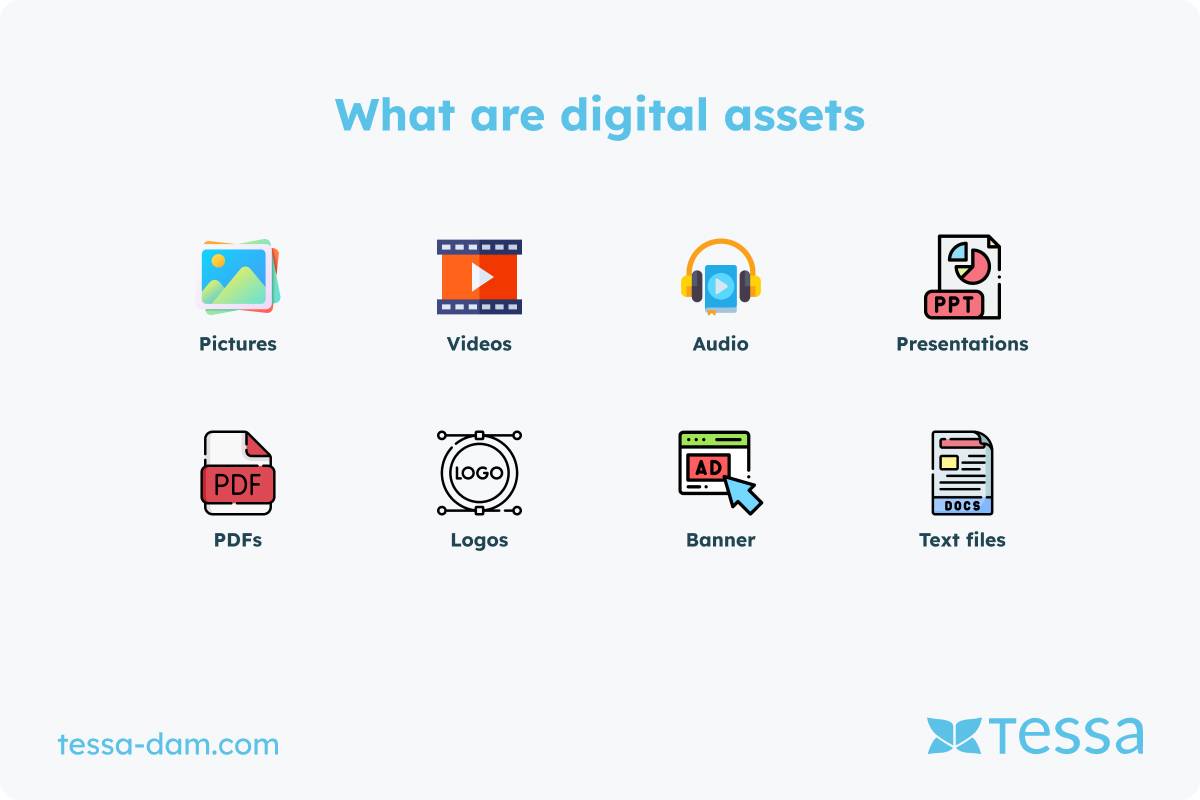What is a Digital Asset?
Digital assets refer to media files. Media files are a diverse and crucial element in today's digital world, allowing information to be presented and communicated in various ways. These files offer a wide range of formats, providing a rich selection of options to create engaging content and capture the attention of the target audience. A significant step in the transformation of a file into a digital asset is integration through a Digital Asset Management (DAM) system. A DAM allows the file to be managed in a structured environment, with metadata added and stored in various formats and sizes. By organizing and managing within the DAM, the file is not only archived but also made easily accessible for various purposes such as marketing campaigns, websites, print materials, and more. The DAM optimizes efficiency and consistency in the use of the file across different channels, thereby helping to present the brand message uniformly and attractively. The following text lists and describes the various digital assets.
How do digital assets differ from digital goods?
Digital goods have a significant overlap with digital assets, but there are also differences. The most important distinction is that digital goods usually have a price associated with them in some form, whereas this is not always the case for digital assets. Digital goods include items like individual music tracks that must be purchased or can be obtained through a streaming provider. The business model for videos and movies is very similar. Additionally, there are e-books, electronic books, which can be sold individually or through subscription models. In the professional context, there are photos that need to be purchased as stock material, taking into account image rights. Digital assets refer to individual files, while digital goods can also refer to applications or services. Think of learning platforms or training apps, for example. These are undoubtedly digital goods, but they wouldn't fit in their entirety within a Digital Asset Management system, although parts of the applications, such as media files, would. Taking it a step further, every program on a computer is a digital good, whereas, in the context of Digital Asset Management (DAM), it is not considered a media file.
What is the relationship between digital assets and Digital Asset Management?
Digital Asset Management systems like TESSA DAM serve as the administrative, manipulation, and distribution instance for digital assets. When dealing with a large volume of media files or a multitude of products, a DAM (Digital Asset Management) system is the tool of choice for ensuring the quality of digital assets. This is achieved through workflows during import. Using delta analysis, it's possible to determine whether all the necessary digital assets are available for all of a company's products. The media files are managed in the DAM and fed into digital media production processes. This can involve exporting the assets in their original form and incorporating them into digital production processes, or manipulating them to place them in the required format in the desired location. Additionally, a DAM can systematically deliver digital assets to a Content Delivery Network (CDN) so that they can be efficiently provided over the internet from any location in the network topology.





